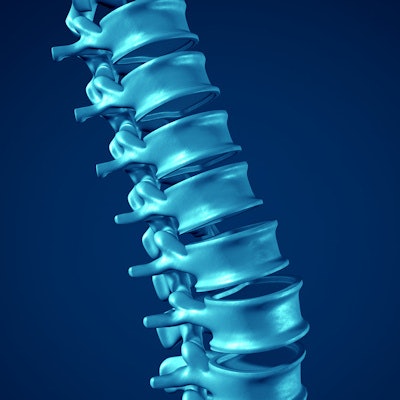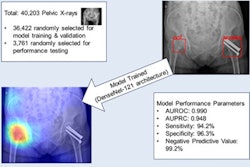
Spinal x-rays should be considered to determine the true risk of vertebral fractures in men with prostate cancer prior to androgen deprivation therapy (ADT), according to a study published in the February issue of the Journal of Bone Oncology.
A Dutch group at the VieCuri Medical Centre in Venlo calculated fracture risk and the prevalence of osteoporosis, vertebral fractures (VF), and sarcopenia in men with prostate cancer at initiation of ADT. They found a high prevalence of vertebral fractures in a third of the men.
"Preventive measures to reduce the risk of fractures could be of immediate importance at the time of initiation of ADT," the group wrote.
Treatment of prostate cancer with ADT involves long-term consequences, including bone loss and fractures. Bone loss reflected by a decrease in bone mineral density is most pronounced in the first year after initiation of ADT, yet studies on the prevalence of fracture risk factors at the moment of ADT initiation are scarce, according to the authors.
In this study, the researchers analyzed data from 115 men with localized or advanced prostate cancer whose fracture risk was assessed at initiation of ADT at their hospital between January 2019 and December 2020. Fracture risk factors included comorbidities, medication, and 10-year fracture risk (FRAX) scores. All patients underwent laboratory tests, dual-energy x-ray absorptiometry, and spinal x-ray exams.
According to the findings, osteoporosis was diagnosed in 4.3% and osteopenia in 35.7% of patients. The mean 10-year fracture risk of major osteoporotic fracture was 4.4% and 1.7% for hip fractures.
At least one VF was present in 32.2% of patients and 33.9% had osteoporosis and/or a VF assessed on spinal x-rays. In 10.4% of patients, at least one new fracture-risk-associated metabolic bone disorder was diagnosed with laboratory testing. Sarcopenia was diagnosed in only one patient.
"Although the prevalence of osteoporosis, sarcopenia, and 10-year fracture risk is low, there is a high prevalence of vertebral fractures in a third of the men with [prostate cancer] at the time of ADT initiation," the authors noted.
Ultimately, despite guidelines recommending fracture risk assessment in men "starting or receiving" ADT, the presence of VFs is often not taken into account, according to the authors. This makes it difficult to identify a VF as a "new incident" during ADT treatment, they wrote.
"Besides a [bone mineral density] measurement and/or FRAX risk calculation, systematic vertebral fracture risk assessment should be considered in all men with [prostate cancer] at initiation of ADT to provide a reliable baseline classification of VFs," the group concluded.




















